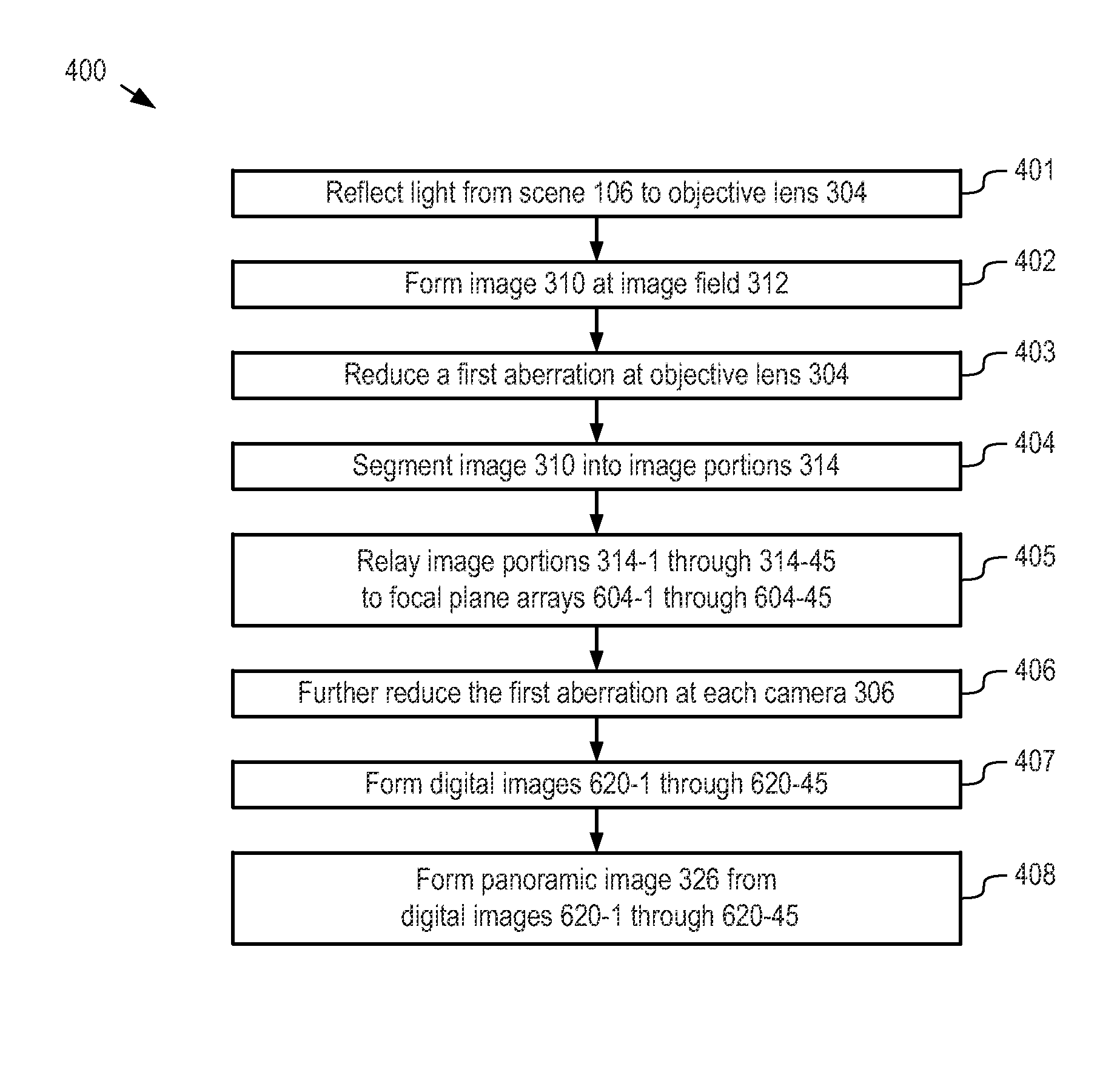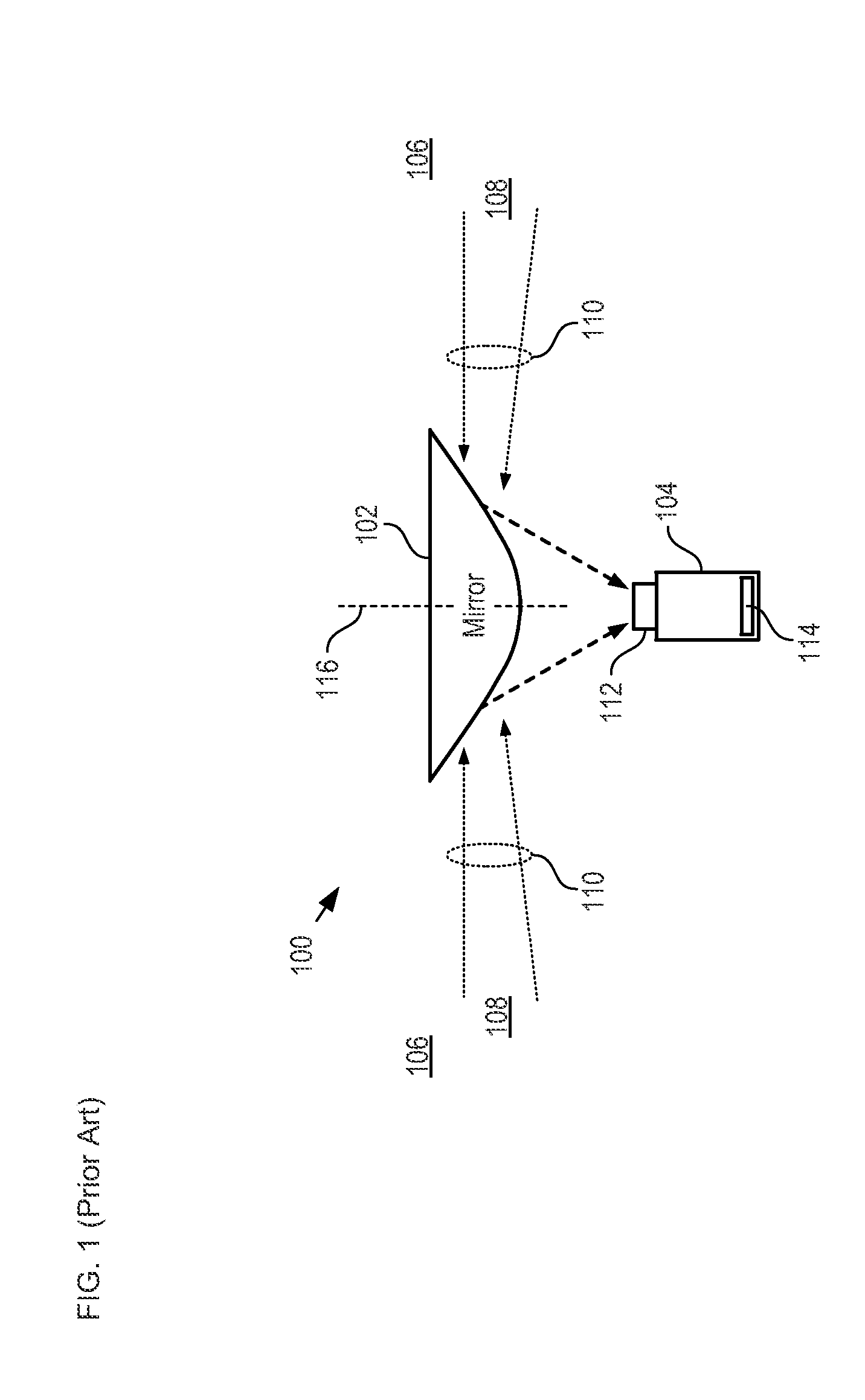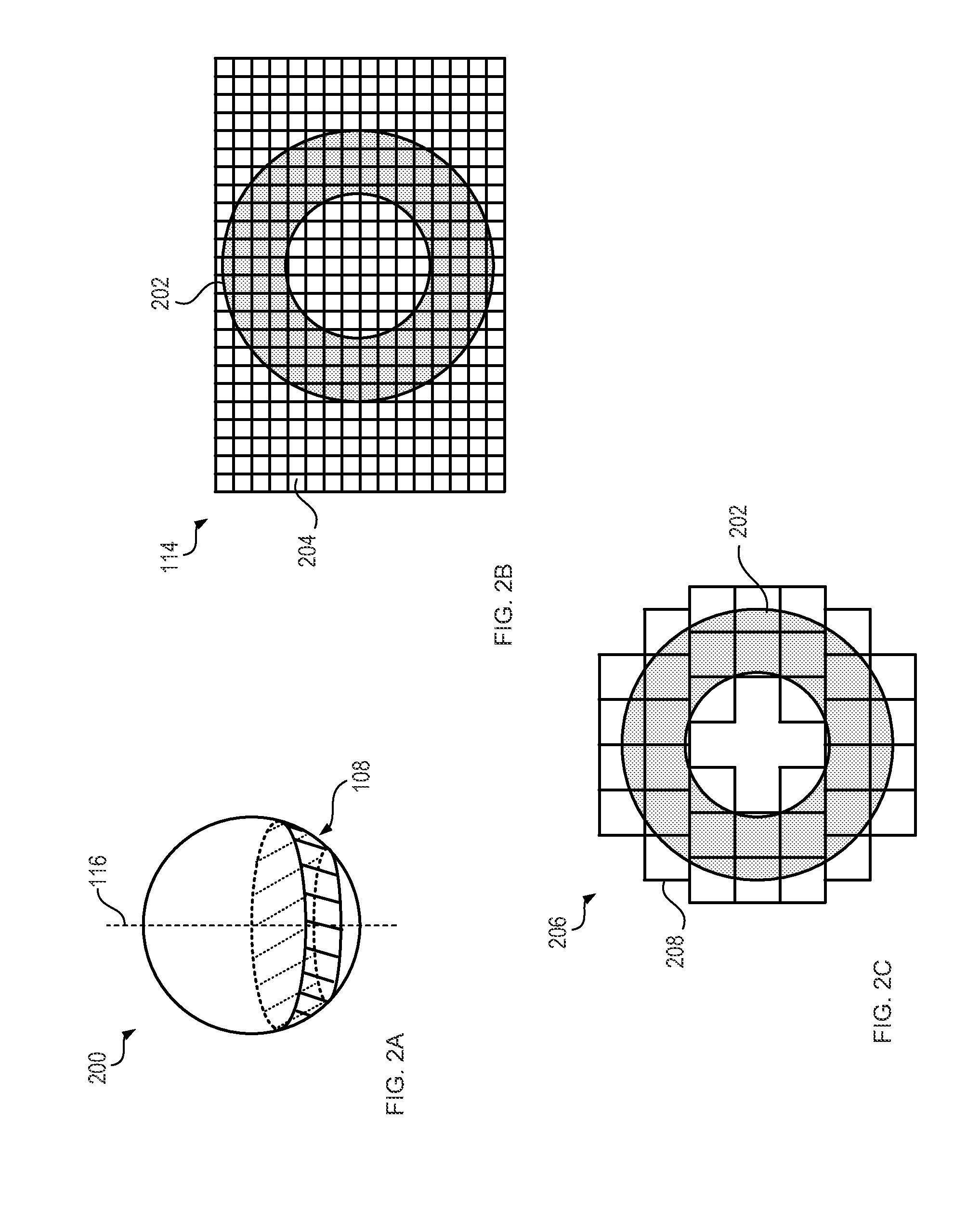Panoramic multi-scale imager and method therefor
a multi-scale, imager technology, applied in the field of panoramic imaging systems, can solve the problems of limited success of prior-art approaches
- Summary
- Abstract
- Description
- Claims
- Application Information
AI Technical Summary
Benefits of technology
Problems solved by technology
Method used
Image
Examples
Embodiment Construction
[0034]FIG. 1 depicts a schematic drawing of a side view of a panoramic imaging system in accordance with the prior art. Imager 100 comprises mirror 102 and camera 104. Imager 100 forms an image of panorama 108, which is a portion of scene 106. Panorama 108 extends 360° around the imager. Imager 100 is representative of panoramic imaging systems described in U.S. Pat. No. 7,123,777, which is incorporated herein by reference.
[0035]Mirror 102 is a convex reflective mirror having a substantially symmetric shape about axis of rotation 116. Examples of such mirrors include hyperboloidal mirrors, spherical mirrors, and parabolic mirrors. Mirror 102 receives light rays 110 from scene 106 and reflects them to camera 104.
[0036]Light rays 110 are received from mirror 102 at input lens 112, which forms an image on the surface of focal plane array 114.
[0037]Focal plane array 114 is a rectangular array of detector pixels, typically CCD elements. Each detector pixel converts its received light int...
PUM
 Login to View More
Login to View More Abstract
Description
Claims
Application Information
 Login to View More
Login to View More - R&D
- Intellectual Property
- Life Sciences
- Materials
- Tech Scout
- Unparalleled Data Quality
- Higher Quality Content
- 60% Fewer Hallucinations
Browse by: Latest US Patents, China's latest patents, Technical Efficacy Thesaurus, Application Domain, Technology Topic, Popular Technical Reports.
© 2025 PatSnap. All rights reserved.Legal|Privacy policy|Modern Slavery Act Transparency Statement|Sitemap|About US| Contact US: help@patsnap.com



